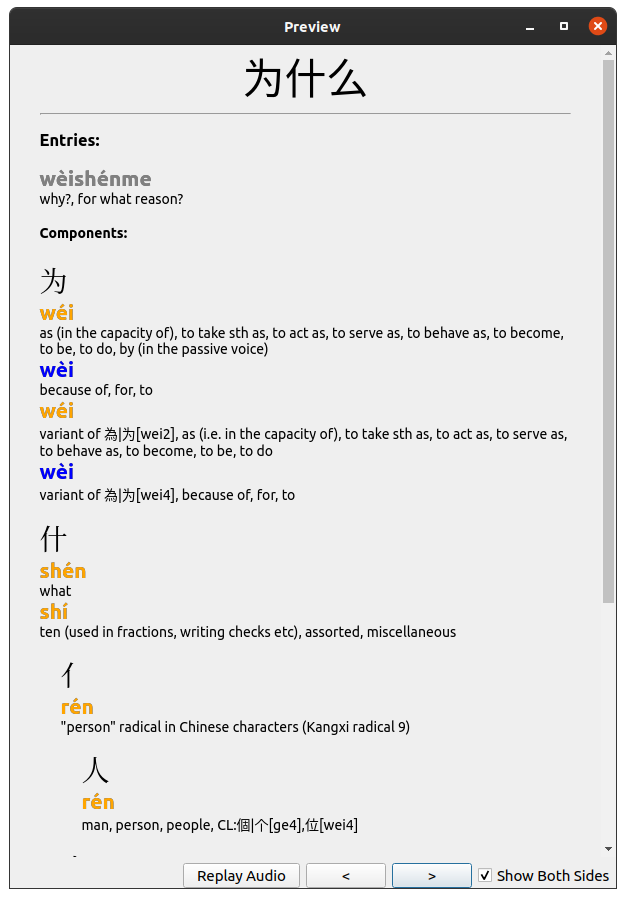My Anki Chinese Deck
After having stopped for almost a month with my Anki revisions, and bored in isolation, I run into Loach JC, Wang J (2016) Optimizing the Learning Order of Chinese Characters Using a Novel Topological Sort Algorithm, which is supposed to outperform previous algorithms, such as Yan X, Fan Y, Di Z, Havlin S, Wu J (2013) Efficient Learning Strategy of Chinese Characters Bahsed on Network Approach, which is the one used in 3000 Hanzi to learn first, which I already wrote about in a previous post.
So, being bored, I decided to return to learning Chinese with a newer Anki deck.
Unlike 3000 Hanzi to learn first, I wanted the deck to have words too. I had also found myself opening Pleco to check for the components of some characters, which is pretty tedious. That's why I've also added a full preorder traversal of the components with their meanings.

After having fought for two days straight with Python's (nonexistent?) type-system, you can now access the finished result here or on my GitHub repo.
There are a total of 11119 cards in the deck.
This is a list of the resources and tools I used in order to make it:
- The paper's data.
- CC-CEDICT, the same dictionary used by the great app Pleco.
- A list of radicals and their meanings, some of which weren't included in CC-CEDICT.
- Google's Wavenet for synthetizing audio.
- pandas, the excelent Python library for data manipulation.
- genanki for exporting the notes.
The deck probably has many bugs, and my CSS capabilities are pretty limited. I'd love to get your feedback if you leave it through the issues feature on the repository. I'd also gladly merge your pull requests.